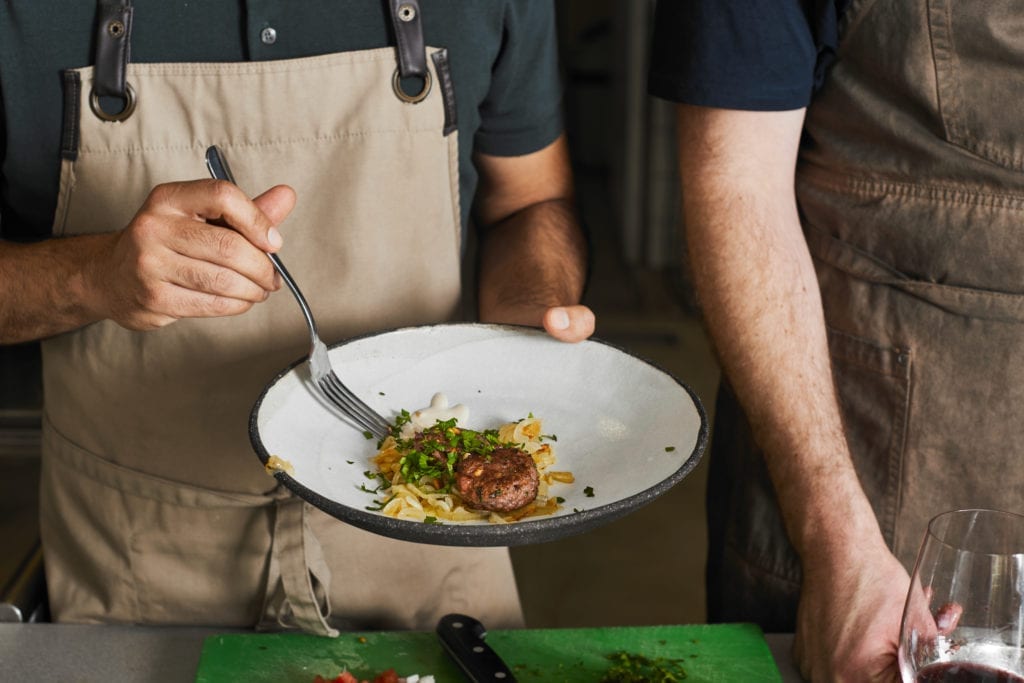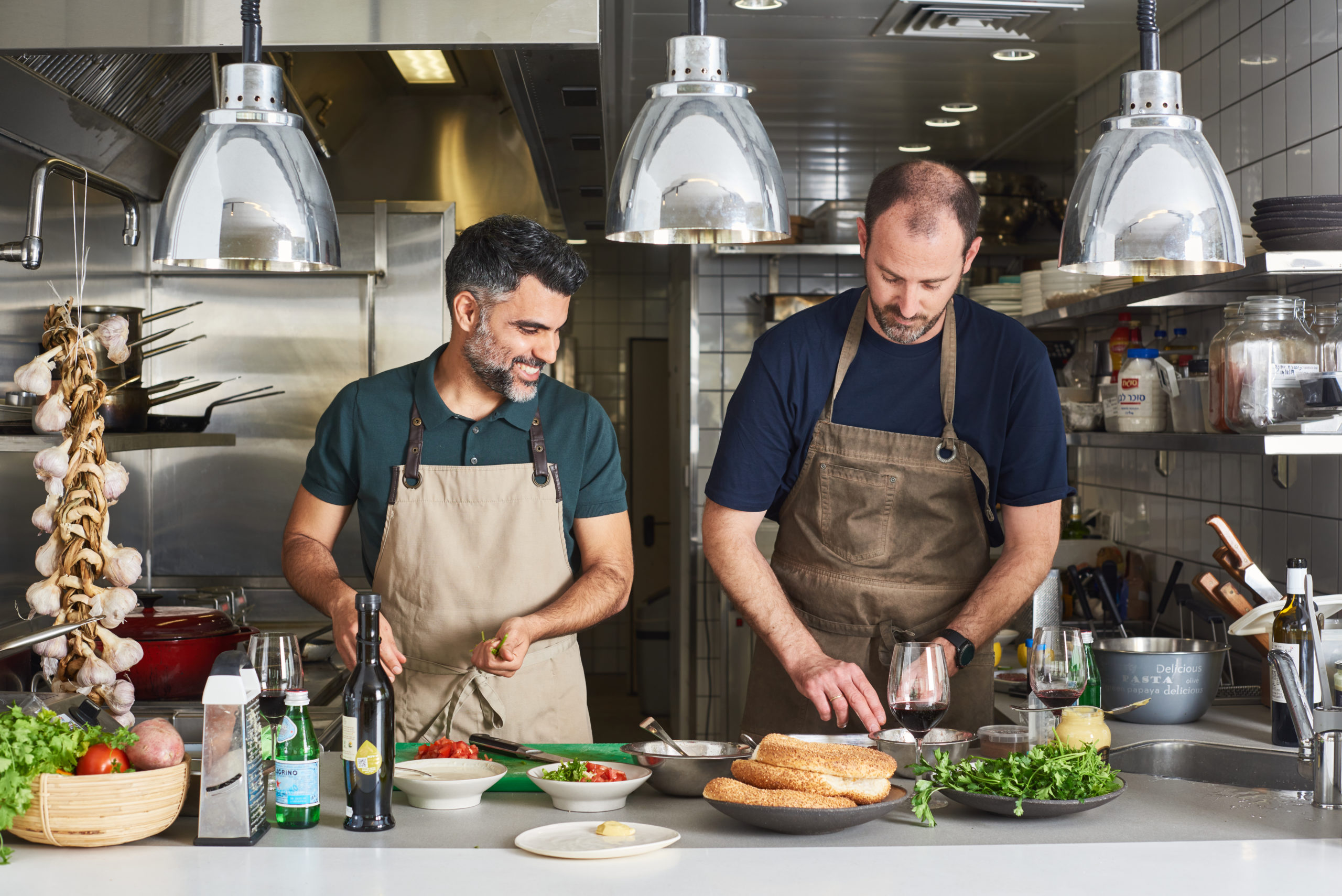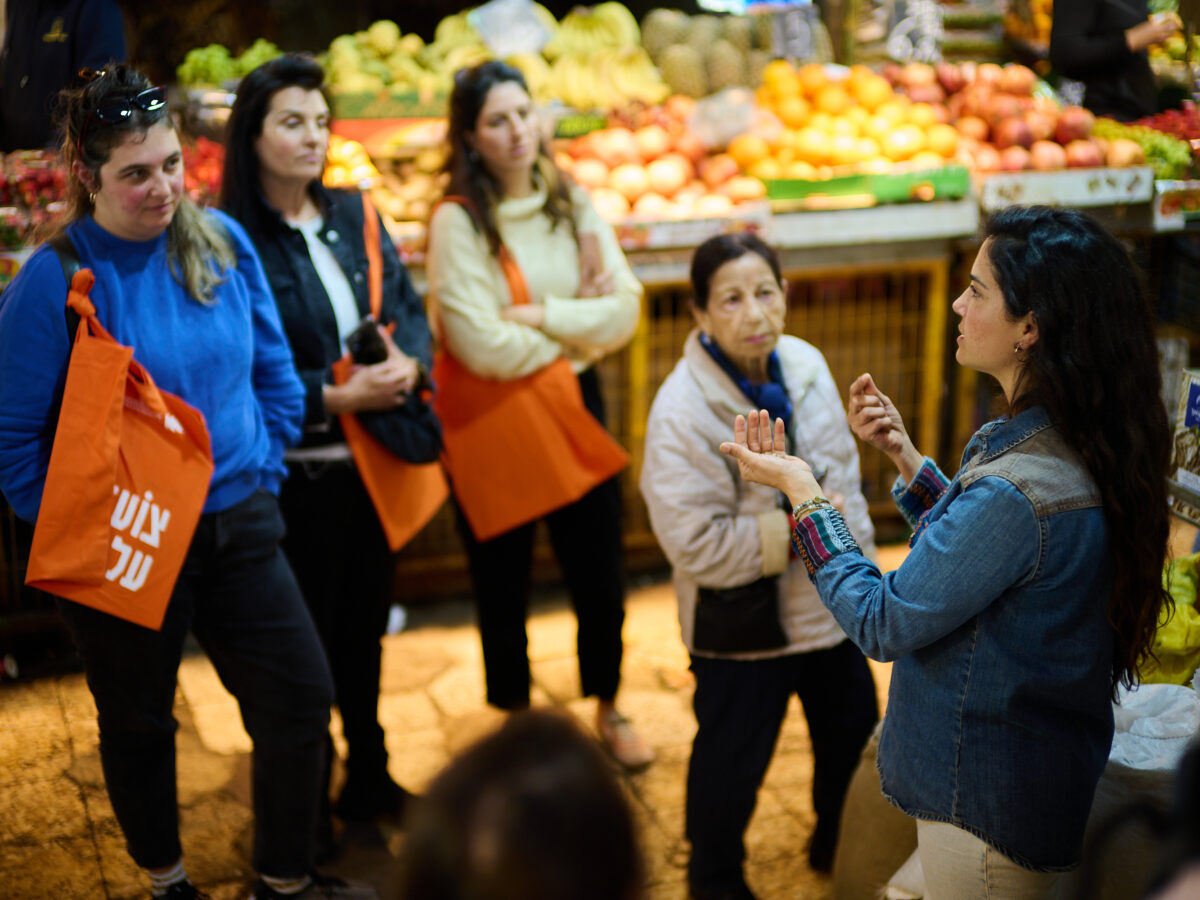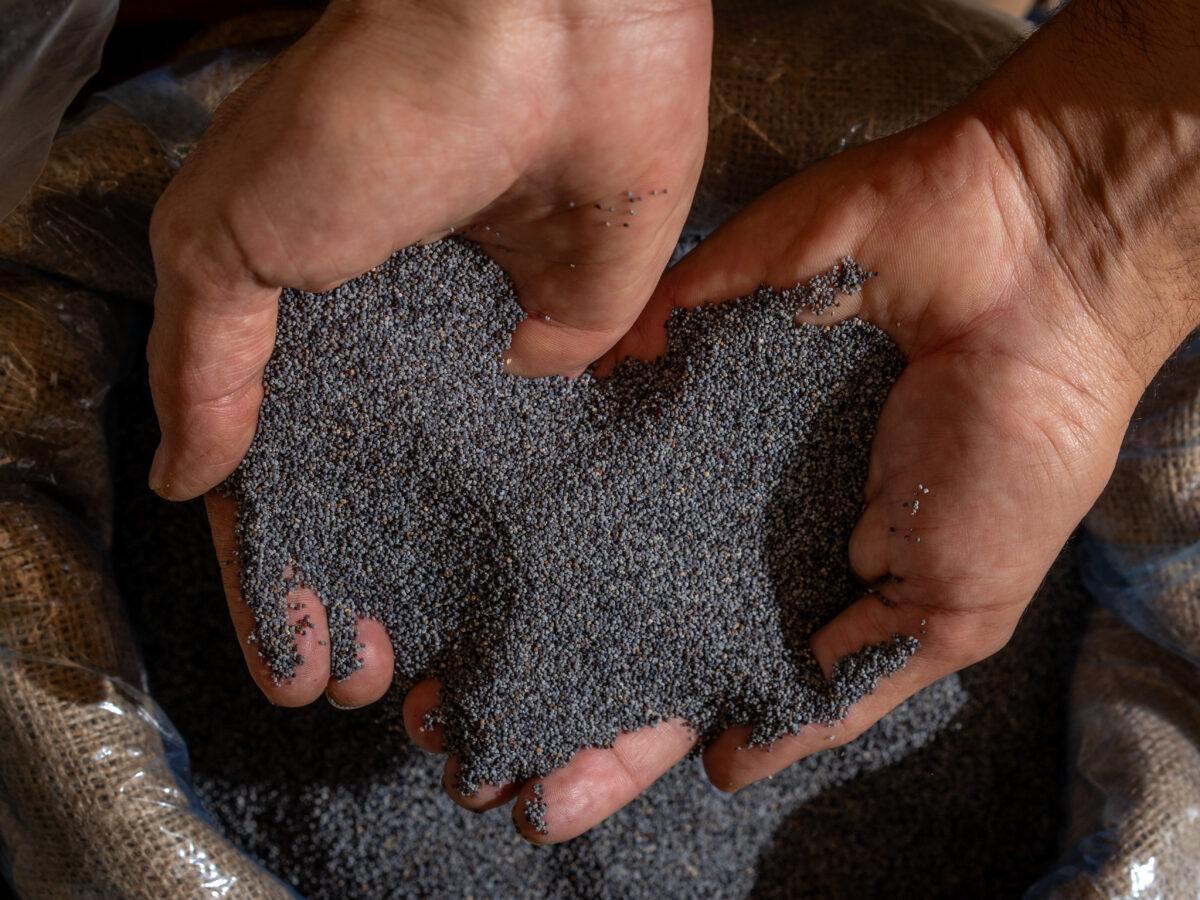What makes something “meat”? Color, form, texture, nutritional value? According to the founder of Redefine Meat, all those things and more. In the quest to develop what he calls “new meat” — a meat substitute based on vegetable matter and printed with 3D technology — Eshchar Ben Shitrit aspires to reproduce what it is that provides the experience of cooking and eating meat. One of them is the Maillard reaction, that sought after caramelization that occurs when meat is exposed to high temperatures, or the juices of meat left on the plate after a meal. How can this be done? It’s all about approach and technology.
We talked with Ben Shitrit to learn about Redefine Meat’s work, how 3D printing is used in the process, and more.
Matan Choufan: Before we begin, I have to ask, are you a vegan?
Eshchar Ben Shitrit: I’m a vegetarian, but I’m leaning more and more toward veganism. From an ethical and environmental point of view, veganism is the only way. But I love food and I love cooking, so it’s hard for me to give up eggs and dairy products, although I’m fully aware of the enormous damage those industries do.
“Right after I gave up eating meat, I became obsessed with finding a substitute that would give me the same pleasure. Not just because I missed the taste, but because I missed hosting people”
— Eshchar Ben Shitrit
What motivated you to launch a meat-substitute — or “new meat” as you call it — company? Sustainability or personal profit?
Right after I gave up eating meat, I became obsessed with finding a substitute that would give me the same pleasure. Not just because I missed the taste and the texture, but because I missed hosting people, cooking, and serving up amazing dishes that I’d made myself. I founded Redefine Meat mostly because I want to go back to eating meat, meat that’s tasty and satisfying, whether it’s a steak or a hamburger. I want to go back to the family outdoor grill, where my grandfather, my father, and I would share blood-red meat and a glass of wine — but without harming animals.
Apart from that, I’ve been involved in a variety of complex and fascinating fields of technology, but there was nothing that really spoke to me. They dealt with making processes more efficient or increasing profits. But I was looking for a technological challenge that was both significant and one I could connect with. Strange as it sounds, I told myself that if there was anyone that was destined to deal with 3D production of meat, it was apparently going to be me.

You started to talk about your background. What did you study and where did you work before Redefine Meat?
I studied law and business management, and I worked for a few years as a product manager at the Indigo division of HP on industrial printing. I was vice president of development with an Israeli start-up called Highcon, which develops machinery for the industrial manufacture of packaging. And, I became very involved in developing new technology for 3D printing of furniture and other large items.
When did you establish Redefine Meat?
My son was born three and a half years ago, and I left Highcon the same day. I started talking about printing meat with Adam, the second founding partner, and several other people we were close to, who were the first investors in the company. In June 2018 we rented a lab above a garage in Nes Tziona, and we joined the FoodTech Accelerator by the Technion, Strauss, and the European Union.
What is “new meat,” exactly, and what’s the technology behind it?
We produce “meat” using technological tools that replace the cow. Our products replicate the important characteristics of meat, which we as consumers identify as “tasty” and “meat.” We believe — and we are able to prove it beautifully — that all the fundamental components of meat can be found in vegetable matter, which is healthy, good for the environment, and cheaper. What we essentially do is use vegetable matter to produce components called “muscle,” “fat,” and “blood,” and merge them into a food product that can be labeled “alternative meat,” or, as we prefer to call it, “new meat.”

What differentiates the “new meat” from other meat substitutes in the marketplace?
We look at meat as science, then as technology, and at the end as a food product. All the other companies in the field do only one of the three. We do them all. Our technology and our innovations relate in depth to how meat acquires its distinct texture, why different cuts feel different from each other, and so on. But the clearest and most outstanding difference is of course the 3D printing of the product. We developed an industrial process for the production of whole meat cuts according to a digital file in purpose-designated machines.
What does the printing allow you to do? In other words, why print?
Meat is the most complex of all the food products we eat. The life of the cow has developed a very complex structure that integrates protein fibers, fat capillaries and unique taste and color molecules in the fluid that is trapped in the muscle. Printing is the only thing that gives us precise control of the location, the texture, and the interrelation of our different components, allowing us to approximate what evolution — or God — has done in the cow. Apart from that, our development process is much faster, because we can produce different cuts and try them out without a change in the components, only with a change in the file.
Is it economically viable? In comparison with meat products and meat substitutes, is there an estimate of the cost to the final consumer?
At the moment we are producing on a small scale, so our cost structure is not representative. We have to remember as well that the meat industry has a value chain involving trillions of dollars, which allows it to be profitable despite the great inefficiency of the process. There is no doubt that in the middle term, alternative meat made from vegetable matter will be healthier and more nutritious — but also cheaper.
With regard to health and nutrition, one of the prominent trends in the culinary world is knowing the source of one’s food. We know what is not in your product, but what is in it, and how does that translate into nutritional values?
In order to create the texture and taste of meat, we have to study its biological structure as well. So we cook different kinds of protein to create texture, and achieve a high-quality composition of amino acids. We mix a variety of fats to achieve succulence, but our product has far less fat than meat, less saturated fat, and no cholesterol at all. There is a small amount of nutritional fibers in our mixture, which are very important, but there are none in meat.
Unlike the meat [industry], we are very transparent about the raw materials and the production process. Little kids can watch how we make the meat, and once we begin marketing, the product will include a full list of ingredients. All the materials are familiar products that people use today. We decided to use only natural taste and color ingredients. At the same time, it is important to emphasize that our meat was not primarily developed to replace [animal] meat as a source of nutrition, but as a source of pleasure.



